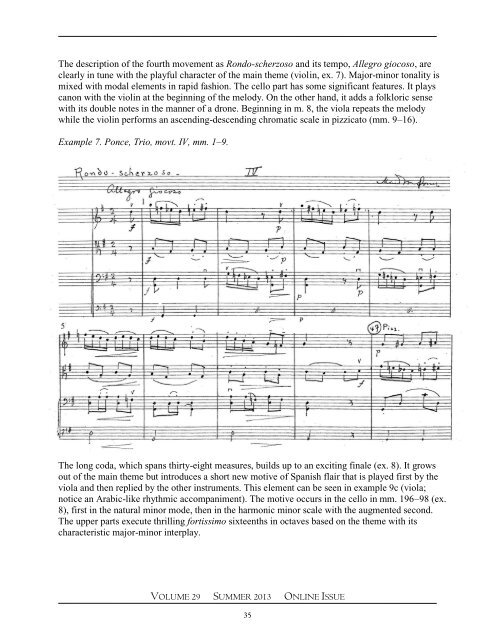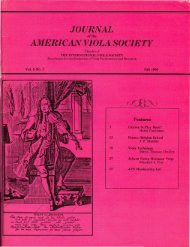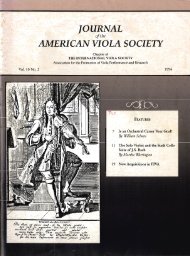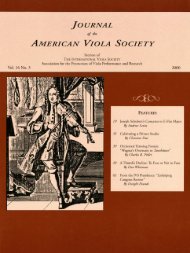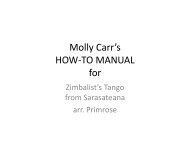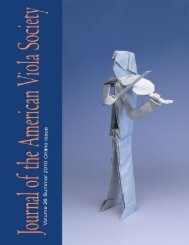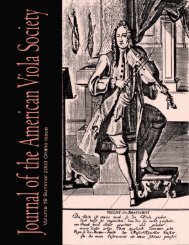Summer 2013 - The American Viola Society
Summer 2013 - The American Viola Society
Summer 2013 - The American Viola Society
Create successful ePaper yourself
Turn your PDF publications into a flip-book with our unique Google optimized e-Paper software.
<strong>The</strong> description of the fourth movement as Rondo-scherzoso and its tempo, Allegro giocoso, are<br />
clearly in tune with the playful character of the main theme (violin, ex. 7). Major-minor tonality is<br />
mixed with modal elements in rapid fashion. <strong>The</strong> cello part has some significant features. It plays<br />
canon with the violin at the beginning of the melody. On the other hand, it adds a folkloric sense<br />
with its double notes in the manner of a drone. Beginning in m. 8, the viola repeats the melody<br />
while the violin performs an ascending-descending chromatic scale in pizzicato (mm. 9–16).<br />
Example 7. Ponce, Trio, movt. IV, mm. 1–9.<br />
<strong>The</strong> long coda, which spans thirty-eight measures, builds up to an exciting finale (ex. 8). It grows<br />
out of the main theme but introduces a short new motive of Spanish flair that is played first by the<br />
viola and then replied by the other instruments. This element can be seen in example 9c (viola;<br />
notice an Arabic-like rhythmic accompaniment). <strong>The</strong> motive occurs in the cello in mm. 196–98 (ex.<br />
8), first in the natural minor mode, then in the harmonic minor scale with the augmented second.<br />
<strong>The</strong> upper parts execute thrilling fortissimo sixteenths in octaves based on the theme with its<br />
characteristic major-minor interplay.<br />
VOLUME 29 SUMMER <strong>2013</strong> ONLINE ISSUE<br />
35


